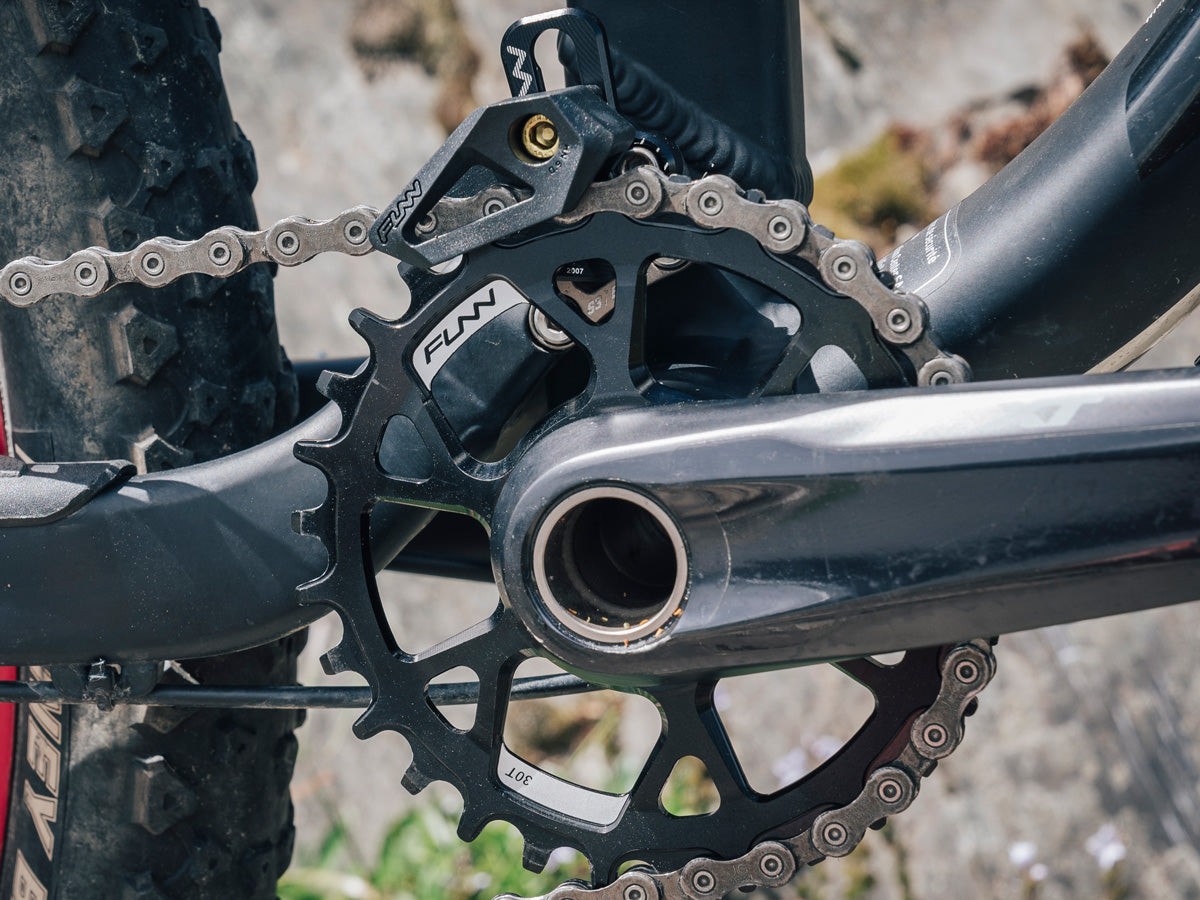A mountain bike chain guide is essential for a smooth and reliable ride. This guide will cover everything you need to know about chain guides, for both experienced riders and beginners. Understanding how to install a chain guide MTB and its role is vital for confidently navigating the trails.
Understanding the Mountain Bike Chain Guide
A mountain bike chain guide is a component designed to keep the chain on the chainring(s) of a mountain bike. This is especially important in mountain biking, where terrain is often rough and unpredictable. The chain guide ensures the chain doesn’t derail during aggressive riding, jumps, or rocky paths.
Do You Need a Chain Guide on Your MTB?
While some mountain bike parts are essential, others are optional for customization and performance. A mountain bike chain guide is often considered optional. However, it’s a valuable addition, especially if you ride on rough terrain or your chain frequently comes off.
Consider the potential downsides against the benefits. The decision to use a chain guide should align with your riding style, preferences, and the demands of your mountain biking adventures.
Benefits of Using a Chain Guide MTB
Chain guides enhance your riding experience, making them integral to your setup. Here’s why:
Enhanced Chain Retention
Chain guides ensure your chain stays firmly on the chainring, even during descents or technical climbs. With your chain securely in place, you can confidently push your limits.
Drivetrain Component Protection
Chain guides act as shields against chain slap and potential derailment. This extends the lifespan of your chainring and derailleur. By preventing chain drops and minimizing wear, chain guides save you money on replacements.
Potential Drawbacks of a Chain Guide
While chain guides offer several advantages, it’s essential to acknowledge the potential drawbacks:
Added Complexity
A chain guide requires installation, adjustments, and maintenance. Some riders may find this added complexity challenging, particularly those who prefer a minimalist approach. Compatibility can also be a concern, as not all chain guides fit every bike frame and drivetrain setup.
Weight and Cost Considerations
Chain guides add to the overall weight of the bike, which can be a concern for riders prioritizing a lightweight setup. High-quality chain guides can also be an additional expense.
Types of MTB Chain Guides
Knowing the different types of chain guides is crucial for making the right choice.
Upper Chain Guides
These guides are simple and best for less aggressive trails. They keep the chain snugly on the upper part of the chainring. Funn MTB offers models like the Zippa Lite ISCG05, Zippa Lite D-Type, Zippa Lite E-Type, Zippa Lite BSA, and Zippa Lite ES.
Bash Guards
While a bash guard doesn’t prevent the chain from falling off, it protects the chainring from impacts on rough terrain. This protection contributes to smoother, more reliable rides.
Full Chain Guides
For aggressive downhill or enduro biking, full chain guides offer comprehensive protection by combining upper and lower guides, like the Funn Zippa AM.
Full Chain Guide with Bash Guard
For tackling the toughest terrains, bash guards with chain guides keep your chain secure and guard your chainring against impacts, like the Funn Zippa DH.
Upper Chain Guide with Bash Guard
Ideal for a mix of aggressive and moderate biking, an upper chain guide with bash guard keeps the chain in place while providing protection against frontal impacts. The Funn Zippa Lite ISCG05 paired with the Zippa Lite bash guard offers reliable chain retention and moderate protection.
Mounting Standards for Chain Guides
Understanding mounting standards ensures compatibility with your bike.
ISCG05 Mounts
Ideal for aggressive riding, these mounts attach directly to the frame. Frames with ISCG05 tabs have pre-drilled holes around the bottom bracket (56mm spacing). The Funn Zippa Lite ISCG05 is an example.
E-Type Mount (SRAM S3 Direct Mount)
Designed for bikes with Shimano E-Type front derailleur threads (22.7mm spacing), this mount allows direct attachment without a bottom bracket plate. The Funn Zippa Lite E-Type is suitable for older frame designs.
D-Type Mount
The D-Type (direct mount) attaches the chain guide directly to the seat tube where the front derailleur would be. This is common on newer mountain bikes. The Funn Zippa Lite D-Type is an example.
BSA Threaded Bottom Bracket
English-threaded bottom brackets (BSA) are common. To adapt to ISCG05, use an adapter between the frame and bottom bracket shell. The Funn Zippa Lite BSA fits directly between the bottom bracket and frame.
Factors to Consider When Choosing a Bike Chain Guide
Choosing the right chain guide involves several factors:
Frame Compatibility
Ensure the chain guide is compatible with your bike’s mounting standards (ISCG, ISCG05, E-Type, D-Type, or BSA mounts).
Riding Style and Terrain
Consider your riding style and the terrain you typically ride. Aggressive riders need stronger, more protective guides. Cross-country riders may prefer lighter, simpler guides.
Chainring Size and Number
Chain guides are primarily designed for single-chainring setups (1x drivetrains). Consider your bike’s drivetrain configuration.
Ease of Installation and Maintenance
Some chain guides are designed for user-friendliness. Evaluate how easy a guide is to install and maintain.
Conclusion
The mountain bike chain guide is essential for enhancing your trail experience. By understanding the types, mounting options, and key factors, you can choose the ideal chain guide for your needs, and learn How To Install Chain Guide Mtb properly.
